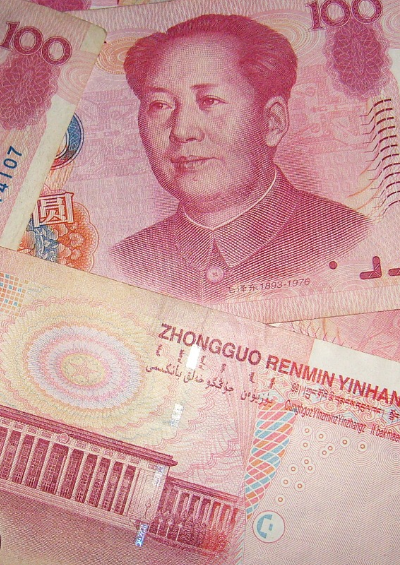How the New AIIB Dwarfs the Asian Development Bank
China is well on its way to building a Sino-centric global financial system.
April 8, 2015

After the UK decision to join Asian Infrastructure Investment Bank in March 2015, a slew of Western and Asian countries filed applications to join the AIIB. This turn of events underscored two political facts of life – China’s attractiveness and the (self-imposed) isolation of the United States and Japan.
In late October 2014, representatives from 21 Asian countries had signed the Memorandum of Understanding on Establishing the AIIB in Beijing. By the end of March 2015, almost 50 countries – two-thirds Asian, one-third non-regional – had filed applications to join as founding members of the Beijing-based Asian Infrastructure Investment Bank (AIIB).
Its subscribed capital is $50 billion, half of which is paid in by China. The authorized capital for the AIIB is $100 billion, the paid-up capital $10 billion.
A new world order
The new institution addresses one of the major barriers to economic development in low and middle-income developing countries — the lack of critical infrastructure such as ports, railways, roads and power.
The AIIB, along with the new “BRICS” bank (called the New Development Bank, or NDB) can be viewed as part of a concerted Chinese attempt to build a Sino-centric global financial system, as an alternative to longstanding U.S. institutional hegemony. They are also a voice for reform where the established IFIs have failed.
The real “kicker” in all this is that the AIIB is likely eventually to dwarf the Asian Development Bank in terms of loan portfolio (and annual lending).
It helps that the AIIB can be expected to obtain AAA rating by the leading rating agencies. Apart from strong support by the major shareholder China, the recent joining by highly-rated non-regional countries (including G7 countries) will lay the foundations of high intrinsic financial strength.
Compared to the AAA-rated African Development Bank (AfDB), the AIIB will likely be less burdened by credit-negative considerations than the AfDB, which is burdened by a challenging operating environment across Africa. The regional exposure to Asia and the sectoral exposure to infrastructure should confer the AIIB a loan portfolio with relatively strong credit quality.
Table 1: Paid-up Capital and Total Loan Stock, US$ billion
Source: Various press releases and annual reports (assessed on 30 March 2015 at the MDB websites).
Table 1 compares the paid-up capital of the ADB and the AIIB as well as actual and prospective loan portfolios.
Recent data show paid-up capital to stand at $5.9 billion for the ADB, backing a total loan portfolio (outstanding plus undisbursed) of $75 billion. (The respective numbers for the IBRD are paid-up capital of $14 billion that underlies a total loan stock of $152 billion.)
If the new AIIB succeeds in building reserves from retained earnings and other sources, it could eventually reach a similar loan-(paid-up)capital ratio as ADB (12.7) and IBRD (10.9). Applying the ADB leverage ratio to AIIB, their paid-up capital ($10 billion) could end up underpinning a loan portfolio of $127 billion (AIIB).
Applying the smaller IBRD leverage, the AIIB loan portfolio would still reach $109 billion eventually, absent (negative) substitution or (positive) agglomeration effects respectively.
While it is much too early today to be confident whether the newcomer will reach the financial performance achieved by the ADB and IBRD, the scenario laid out here might well suggest that the AIIB will end up with a higher loan portfolio than the ADB presently holds.
Consequently, expect the China-led development bank to have a leading impact on multilateral development lending in Asia and hence on global financial governance.
Takeaways
The AIIB will end up with a higher loan portfolio than the Asian Development Bank presently holds.
The AIIB is part of a concerted Chinese attempt to build a Sino-centric global financial system.
The AIIB, the China-led development bank, will have a leading impact on multilateral development lending in Asia.


